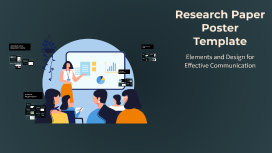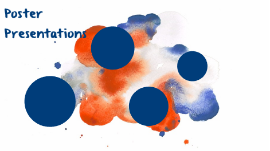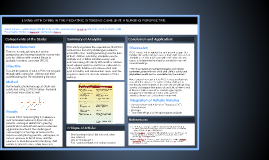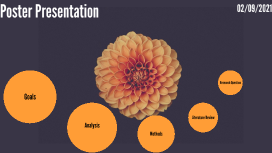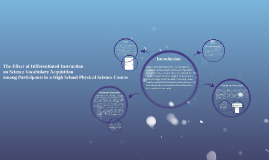Pediatric Critical Care Poster Presentation
Transcript: Complementary and Alternative Therapies (CAT) Aromatherapy Massage Team Debriefings and therapist support available Hermeneutic phenomenological study was conducted using 12 PICU nurses. Personal anecdotes were used as well. There is not enough research on the perspective and training needs for nurses who care for children with terminal illness in pediatric intensive care units (PICU). Method LIVING WITH DYING IN THE PEDIATRIC INTENSIVE CARE UNIT: A NURSING PERSPECTIVE Problem Statement Stayer, D. & Lockhart, J. (2016). Living with dying in the pediatric intensive care unit: A nursing perspective. American Association of Critical-Care Nurses, 25(4), 350-356. doi: 14037/ajcc2016251 Components of the Study: Summary of Analysis: Results Overall, PICU nurses highlight inadequate communication between physicians and parents, prolonged denial from grieving parents which sometimes leads to extended aggressive treatment, the challenge of expressing inner feelings of nurses to the hopeless and grieving parents, colleagues, or nurses’ spouses or loved ones, and the absence or total disregard of the dying child wishes or point of view in their own care. Critique of Article: Article Authors: Debbie Stayer, RN-BC, PhD, CCRN, and Joan Such Lockhart, RN, PhD, CORLN, AOCN, CNE Presentation: Frederick Maniraho and Kristina Pansa To paint the picture of what a PICU nurse goes through while caring for children and their parents during the life-threatening illnesses. Wright, N., Zakarian, M., & Blake, H. (2016). Nurses’ views on workplace wellbeing programmes. British Journal Of Nursing, 25(21), 1208-1212. doi: 10.12968/bjon.2016.25.21.1208 This study organizes the experiences that PICU nurses face, including challenges related to end-of-life care, helping parents grieve the loss of their children, providing adequate care to multiple sick children simultaneously, and communicating effectively with families. Nurses need support systems and formal education to interact with families and process their own grief in healthy and constructive ways, and this support is often not formally present in PICU settings. Objective Small participant pool, but data saturation was achieved Limited demographic Few recommendations for further research Chen, M., Fang, S., & Fang, L. (2015). The effects of aromatherapy in relieving symptoms related to job stress among nurses. International Journal Of Nursing Practice, 21(1), 87-93. doi:10.1111/ijn.12229 Integration of Holistic Nursing PICU nurses find it important to comfort and support the families during the dying process of their child. Nurses find it helpful to be able to be open with each other, discuss cases, and determine how best to provide families with peaceful endings. More research is need to help PICU nurses to effectively cope with the stress of caring for a dying child and to emotionally and therapeutically communicate with grieving parents and respect their personal and cultural view of end of life care. More research is needed regarding the perspective of families of a dying child so that interdisciplinary care can be further improved. Conclusion and Application: “The importance of maintaining open and honest communication with the child and child’s family and physicians could not be overstated by the nurses.” References: Discussion






